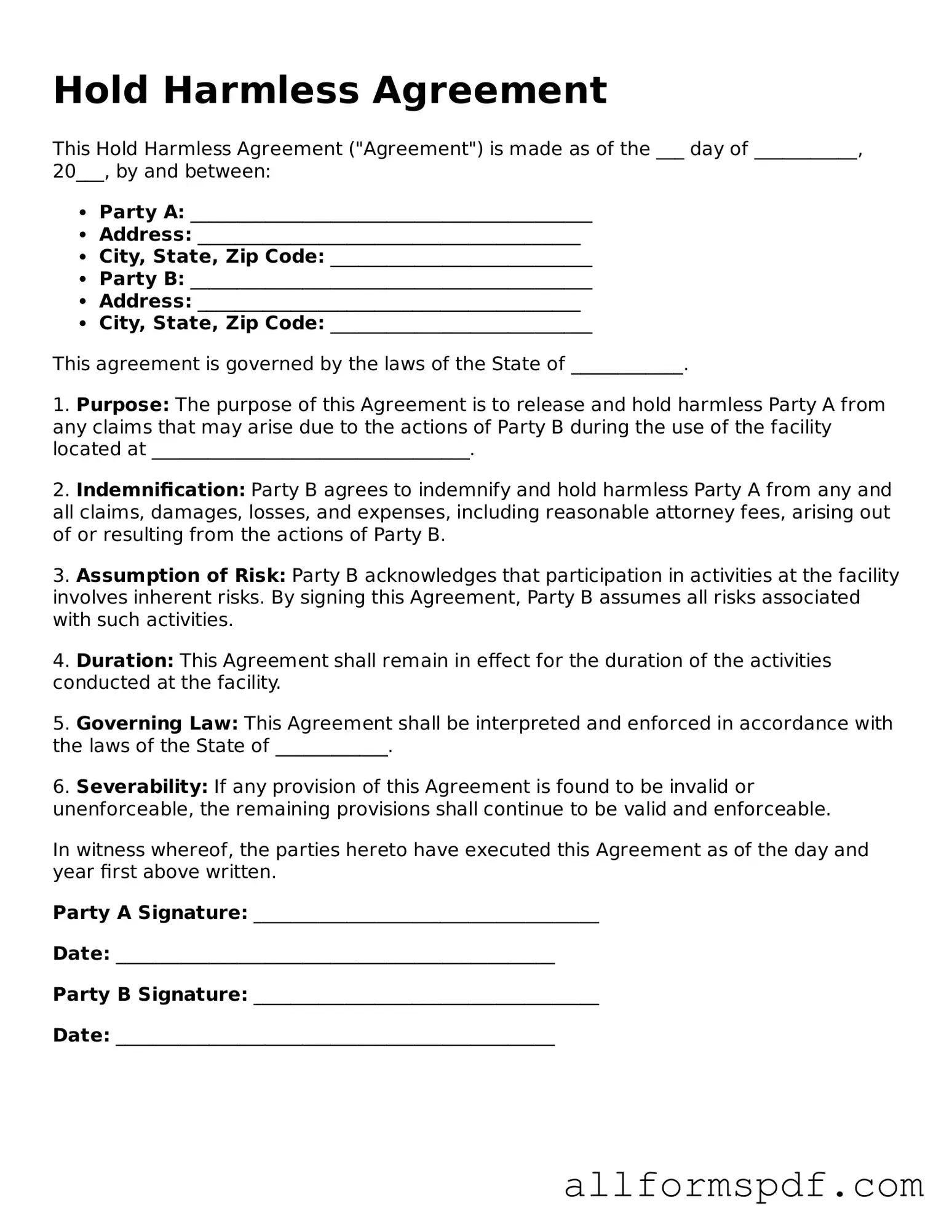When filling out a Hold Harmless Agreement, individuals often overlook critical details that can lead to complications later on. One common mistake is failing to clearly define the parties involved. It is essential to specify who is being held harmless and who is agreeing to hold them harmless. Ambiguities can create confusion and may render the agreement unenforceable.
Another frequent error is neglecting to specify the scope of the agreement. Without a clear description of the activities or situations covered, the agreement may not provide the intended protection. It’s crucial to outline the specific risks or liabilities that the agreement addresses, ensuring that all parties understand what they are agreeing to.
Many people also make the mistake of not including a date. While it may seem trivial, the absence of a date can lead to disputes about when the agreement was made. This can be particularly problematic if the agreement is ever challenged in court. Always ensure that the date is prominently included.
Inadequate signatures can also undermine the validity of a Hold Harmless Agreement. All parties involved must sign the document to indicate their acceptance of the terms. Failing to obtain a signature from one party can result in the agreement being deemed incomplete and unenforceable.
Some individuals overlook the importance of having witnesses or notarization. While not always required, having a witness or notary can add an extra layer of legitimacy to the agreement. This can be particularly beneficial if the agreement is ever called into question.
Another mistake is using vague language. Legal documents require clarity and precision. If the language is too general or ambiguous, it may lead to misinterpretation. Using specific terms and straightforward language helps to ensure that all parties understand their obligations and rights.
Lastly, individuals may forget to review the agreement thoroughly before signing. Rushing through the process can lead to overlooking critical details. Taking the time to read and understand the entire document is essential for ensuring that all parties are fully aware of their responsibilities and the risks involved.
